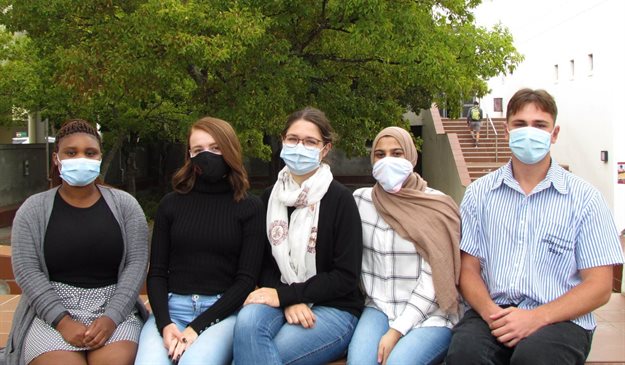Biodegradable cigarette butts a potential source of toxic pollution

Cigarette filters are made of a plastic called cellulose acetate. When tossed onto the ground, plastic, as well as the nicotine, heavy metals and many other chemicals it has absorbed, enter the surrounding environment. It can take between two to five years for a cigarette butt to break down into microplastics, all the time leaching heavy metals and chemicals into the environment. In an attempt to address the microplastics problem, several companies have started to manufacture “biodegradable” cigarettes, where the filters are made of natural materials such as hemp or cotton.
Impact on bacterial communities in soil
However, the students asked, if these biodegradable butts degrade so much faster than their plastic alternatives, would they then not have more of an impact on bacterial communities in soil, as that is where most cigarette butts land up?
With this question in mind, the team had to come up with a workable way of testing their hypothesis as part of the third-year Microbial Ecology module in the Molecular Biology and Biotechnology programme at SU, and present their findings at a mock-up academic conference nine weeks later.
The group found that the leachate from both biodegradable and non-biodegradable cigarette butts contained the presence of elements such as aluminum, arsenic, boron, barium, cadmium, cobalt, chromium, copper, iron, mercury, manganese, molybdenum, nickel, lead, antimony, selenium, tin, strontium, vanadium and zinc.
The leachate from the biodegradable butts were found to contain much higher concentrations of these metals and metalloids, resulting in a significant impact on the composition of the microbial community of the soil sample in their experiment, compared to the soil sample exposed to the leachate of non-biodegradable butts.
“Although biodegradable cigarettes are marketed as more environmentally friendly, the impact which the increased metal concentrations has in these cigarettes is concerning and represents a potential source of toxic pollution and environmental damage,” they write in the research paper.

Bacteria develop metal resistance
Professor Karin Jacobs, their lecturer and a co-author on the paper, says of particular concern is the fact that bacteria exposed to heavy metal contamination have been shown to develop metal resistance, which has been found to correlate with the development of antibiotic resistance.
Moreover, apart from the metal content of cigarette butts, it also contains contaminants such as nicotine, phenols and polycyclic aromatic hydrocarbons (PAHs), the latter forming a class of compounds known for its carcinogenic properties.







